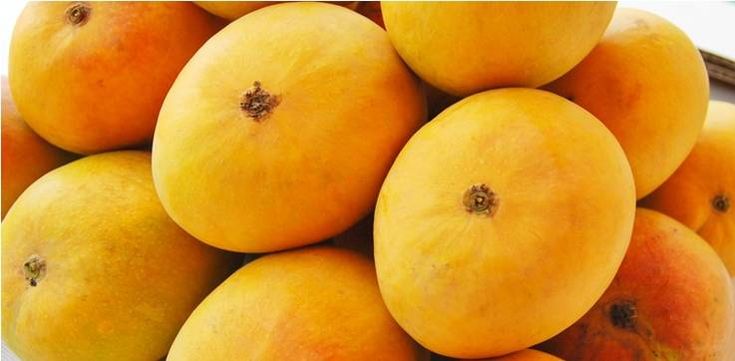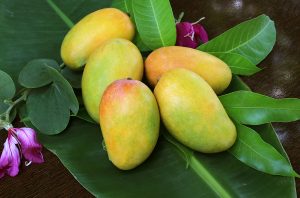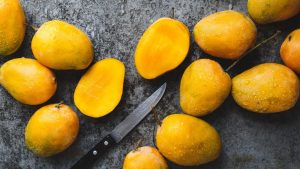Organic Mango

Making Organic Mango Production Relevant, If Not Profitable
The King of All Fruits and Summer’s Delight is a magnificent fruit whose cultivation is the lifeblood of many rural families and towns. Mango crop production has done great pride in tropical regions like India for years, and it’s past time for farmers to consider switching to organic Mango producing methods. There are various concerns linked with the idea of turning Mango production into an organic farming model, and as a result, farmers concerned about the quality of the fruit, particularly in terms of taste, as well as the crop’s profitability.
Farmers are of course correct in expressing their misgivings regarding organic Mango production, knowing full well that the Mango is a seasonal crop that lasts only a few months of harvesting or fruit collection and processing. Evaluating the hurdles and recommending best practices would aid in motivating traditional agricultural communities to make the daring transition to organic farming.

Farmers’ Perceptions on Obstacles to Organic Mango Cultivation
Mangoes known for their high value and high profitability, and as a result, significant investments in mango cultivation made each year. The success rate considered by the size of the fruit, the quality of fruit yield per tree, and, finally, the flavour and texture. The fear is that organic mango production will fall short of the farmers’ three standard expectations. There is also a good chance that a substantial portion of the crop will be utterly wasted. It is due to the use of minimum or no pesticides or insecticides. Pathogens that affect mango fruits on a wide scale include insects and black flies, which are more difficult to control in organic farming. As a result, insufficient production will result in increased demand for the crop, which organic farming standards will be unable to meet.
Mangoes found to be infected with these insect pests will be rejected by export quality checks. Farmers are naturally hesitant to expose their harvest to such high levels of danger, to the point of being unable to export the fruits; this remains a major impediment to organic mango production in India and adjacent farming countries.
Motivating Factors for Transitioning to Organic Agriculture
Aside from the present problems, there have always been numerous compelling arguments for organic farming, such as the development of healthier plants and fruits, in addition to being aesthetically pleasing. There is a significant advantage to the ecology and ecosystem, which will benefit farming communities in the long run. Given all of these benefits, organic mango farming is unquestionably worthwhile.

The globe is already moving toward organic practises, whether due to the passion of certain farmers, market demand, or simply recognition of the key benefits of organic production. Organic mango cultivation has a bright future in terms of both quality and economics.
How to start a mango tree from seed
A mango tree can be grown from seed, but the seeds must come from a completely developed fruit and be planted as soon as possible. To allow for root development, choose a tall, deep pot or bag.
You can buy organic gir kesar mango online from here.
Remove any excess flesh from the seed. The entire seed can be planted whole in potting mix by merely burying it slightly, although germination will be gradual. Carefully open the stone – which acts like a shell around the kernel – and extract the kernel without hurting it to speed up germination. Place the kernel three-quarters buried in a good potting mix, with the top end emerging. The folded-up first leaves and sprout, which should be evident, are located on the “top.” Maintain a light moisture level and place in a warm location. In less than three weeks, the seeds should germinate.
A mango tree
When planting a mango tree, keep the following in mind:
Because mango trees have a core tap-root, it’s critical not to injure it when planting. The simplest method to avoid harm is to avoid severe root ball disruption during planting.
Make a planting hole that is at least twice the width of the pot, as well as 20cm deeper.
Mix in some well-composted manure or planting compost, as well as a slow-release fertilizer.
While establishing, keep the plant well-watered.
Maintaining a mango tree
Mango takes very little regular care or maintenance, other from minor trimming to keep its size in check. Water young trees frequently until they have established themselves, and keep them well mulched in the early years to aid in the development of the surface root network.
Mango trees (Mangifera indica) are deep-rooted plants that can grow to be enormous landscape specimens. They are evergreen and are usually grown on rootstocks that boost the plant’s hardiness. Mango trees produce fruit in three years and fruit develops swiftly. Select a variety that is appropriate for your climate. The plant may grow in practically any soil, but it prefers well-drained soil in a protected location. For the best fruit output, plant your tree where it will receive full sun.
Dig a hole twice the width and depth of the root ball to prepare the spot. Fill the hole with water and watch how quickly it drains to check the drainage. Mango trees can withstand moderate floods, but the healthiest plants cultivated on soils that percolate well. Plant the young tree close below the soil surface, with the graft scar visible. The young plant does not require pruning, but keep an eye out for suckers from the graft and remove them. Watering a young mango tree on a regular basis is necessary as the plant grows.
Mango Trees Grown from Seed Mango trees are easy to grow from seed. Slit the hard husk of a fresh mango pit. Remove the seed from the inside and place it in a large pot with seed starter mix. Keep the soil equally moist and the pot at a temperature of at least 70 degrees Fahrenheit (21 C.). Sprouting can happen in as little as eight to fourteen days, but it can take up to three weeks. Keep in mind that it will take at least six years to bear fruit.
Maintaining a Mango Tree The care of a mango tree is comparable to that of any other fruit tree. To soak the extended taproot, water the trees deeply. Before watering again, allow the top surface of the soil to dry to a depth of several inches. Irrigation has to done in alternating of 2 months. Three times a year, fertilize the tree with nitrogen fertilizer. When the tree is four years old, prune it to eliminate any weak stems and create a robust branch scaffold. Following that, only prune to eliminate damaged or unhealthy plant material.
Mango tree pruning
Pruning away the core stalk of young trees encourages lateral branching. Wind can easily harm mangoes, so remove any broken branches as soon as possible and clean up the affected area.
Because fruit produced on the current season’s growth, modest trimming in the autumn through early summer will promote flowering and fruiting.
Mango tree care also entails keeping an eye out for pests and illnesses. Growing mango trees in your yard will provide you with a lifetime of fresh, tangy fruit from a beautiful shade tree.



